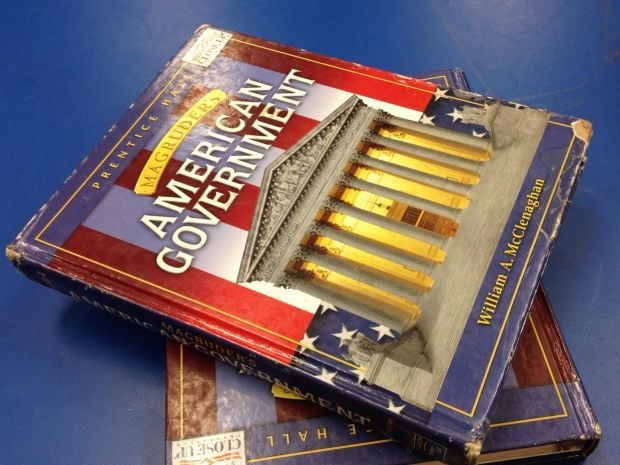PHOENIX — Arizona schools overall spent less of the money they received last year in the classroom than in any of the 16 years the state has been keeping track.
The new report Wednesday from the Auditor General’s Office found that about 54 cents out of every dollar spent to educate Arizona youngsters in 2015 went for instruction. That includes everything from teachers, aides and even coaches to supplies like pencils and papers and some activities like band or choir.
That figure statewide was 57 cents out of every dollar in 2008. That difference is real money.
Auditor General Debra Davenport said had districts directed resources into the classroom last year at the rate they did in 2001, the first time her agency did this report, an additional $422 million would have been spent in the classroom. With close to 1 million students in traditional public schools, that translates to an extra $422 per student.
And she said the decrease since 2004 represents more than $2.4 billion not being spent in the classroom during the 12-year period.
Aside from being at the lowest point since the agency started looking at the issue in 2001, it also is 7.3 cents below the national average.
Chuck Essigs, lobbyist for the Arizona Association of School Business Officials, said the decline should come as no surprise.
He said last budget year the state cut $114 million from one of the state aid formulas. And Essigs estimated that schools have lost out on $2 billion in capital funding since 2009.
What that means, Essigs said, is schools have had to use a larger percentage of the dollars they have fixing the things the state should have paid to replace, like an air conditioning system or a new roof.
“They’re repairing buses they shouldn’t be repairing,” he said. “They ought to be replacing them.”
Ditto, Essigs said, with patching the roof. But the money to replace it isn’t there.
That leaves only a couple of areas to cut.
One is administrative, everything from the salaries of superintendents and principals to clerical staff workers. But Davenport said Arizona schools, as a whole, were slightly more efficient than the national average, spending just 10.4 percent of their dollars on administration versus 10.9 percent nationally.
Arizona schools do spend much more on student support than the national average, 8.2 percent of their budgets versus 5.6 percent. That covers counselors, social workers, speech pathologists and nurses.
But Davenport said that difference may be related to the state’s relatively high poverty rate.
In the 2015 budget year — the most recent data available with national comparisons — 23 percent of Arizona’s school-age children lived at or below the poverty level, versus 19 percent nationally.
What that largely leaves schools to adjust, Essigs said, is classroom spending. The net effect, according to Davenport, has been lower teacher salaries and larger class sizes.
Davenport said that between 2004 and 2016, the average teacher salary, adjusted for inflation, decreased 9 percent. And that’s despite the average number of years of experience staying the same.
And just between 2011 and 2016, she said, statewide average teacher pay dropped from $49,185 to $46,384 after inflation.
“During the same five-year period, the statewide average students per teacher increased from 18.1 to 18.6,” the report says.
That contention about having to trim classroom spending due to other costs that can’t be controlled and lack of additional state dollars gets a skeptical response from Mike Quinlan, manager of the audit staff that prepared the report.
“We hear that a lot, too,” he said, saying he’s finding that claim hard to swallow. Quinlan cited figures from prior years when school districts were getting increased funding.
“In those years we didn’t see all of that additional funding going into the classroom,” he said.
“We saw other areas increasing,” Quinlan said. “So if all of those are fixed costs, why aren’t the additional monies … being spent in the classroom?”
Schools did get an infusion of $250 million last school year after voters approved Proposition 123.
“But it didn’t come in until the latter part of June,” Essigs said — the very end of the budget year.
“Most of the districts I’ve talked to carried that money over into the next year,” he said. “It was too late to try and make any major expenditures with it that year.”
The flip side of all that, though, is that there may finally be an end to the downward trend in the percentage of dollars spent in the classroom.
Aside from that carry-forward, schools will be getting more than $300 million this budget year in new Proposition 123 dollars. And unlike last year, Essigs said schools do not have to absorb new cuts in state spending this budget year.
“So that should be a year where we start to see movement in the other direction,” he said.
But Essigs cautioned it will take time to make a real difference and get schools back to the 57.3 percent figure for classroom spending that Davenport reported for 2008.





